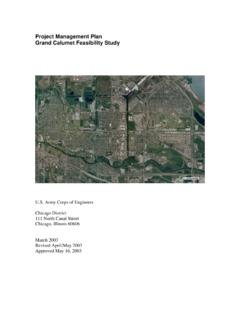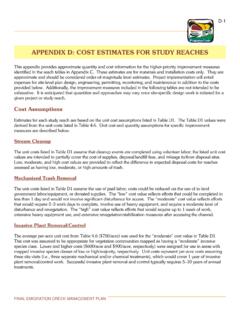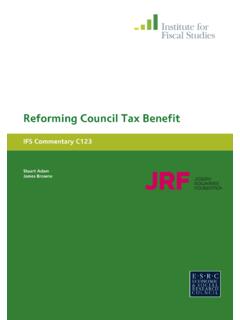Transcription of A Guide to Conducting Household Surveys
1 A Guide to Conducting Household Surveys for Water Safety Plans Centers for Disease Control and Prevention (CDC) Suggested citation: Centers for Disease Control and Prevention. 2008. A Guide to Conducting Household Surveys for Water Safety Plans. Atlanta: U. S. Department of Health and Human Services. The findings and conclusions in this report are those of the authors and do not necessarily represent the views of the Centers for Disease Control and Prevention. Use of trade names is for identification only and does not imply endorsement by the Centers for Disease Control and Prevention, the Public Health Service, or the Department of Health and Human Services. A Guide to Conducting Household Surveys for Water Safety Plans Department of Health and Human Services Centers for Disease Control and Prevention National Center for Environmental Health Agency for Toxic Substances and Disease Registry Division of Emergency and Environmental Health Services Use of firm, trade, and brand names is for identification only and does not constitute endorsement by the Government.
2 Additional information can be obtained from Dr. Richard Gelting, PhD Environmental Engineer CDC/NCEH/DEEH/EHSB 4770 Buford HWY, NE Mail stop: F-28 Atlanta, GA 30341 USA Telephone: Fax: E-mail: 1 TABLE OF CONTENTS BEFORE YOU Population Water treatment data ..6 Health department ..7 Laboratory ..8 Safety considerations ..8 Other considerations ..8 TIME BUDGET Interview personnel ..10 Field Transportation ..11 Photocopying costs ..11 Phone cards or credit ..11 Water quality testing ..12 Data entry ..12 Other INFORMED CONSENT/HUMAN SUBJECTS DETERMINING SAMPLE SURVEY Household RECRUITMENT AND TRAINING OF THE SURVEY Composition of the survey team.
3 18 Field coordinator ..20 Data entry ..20 Transportation service ..21 Training of surveyors ..21 2 DEVELOPING THE SURVEY WATER QUALITY TESTING OF Household Chlorine residual testing ..23 Microbiological testing ..24 Testing other parameters ..25 Treated water quality on survey DATA ENTRY, ANALYSIS AND Data entry ..26 Data analysis ..27 Reporting and presentation of ALTERNATIVES TO A Household Appendix A- Section-by- Section Summary Survey Planning Checklist ..32 Appendix B- Sample Budget Estimate for WSP Household Survey ..33 Appendix C- Sample Informed Consent for WSP Household Survey ..34 Appendix D- Method for Calculating Sample Size for a WSP Household Survey ..35 Appendix E- Sample Household (HH) Tracking Appendix F- Sample Daily Household Visitation Log Sheet.
4 41 Appendix G- Sample contracts for survey personnel ..42 Appendix H- Sample WSP Household Survey Training Program ..44 Appendix I- Survey Instrument for a WSP Household Survey ..45 3 Introduction Water Safety Plans are a World Health Organization (WHO) methodology designed to assess and manage risk in drinking water systems. A Water Safety Plan (WSP) aims to identify hazards to drinking water quality that can be introduced at multiple points from the source to the tap. The WSP does not, however, traditionally provide for identifying hazards that could compromise drinking water quality after it reaches the Household tap, such as contamination associated with water collection, storage, and treatment practices within the home.
5 A Household survey can help researchers to understand the fate of water from the time it reaches the home to the point of consumption. It can provide valuable information about the quality and reliability of water reaching the home and changes to water quality through Household storage and treatment. It can also provide information on the prevalence of water-related illnesses, community perceptions and concerns, alternate or supplemental water sources, and customer satisfaction, information that may fall outside the purview of a traditional Water Safety Plan. A Household survey contributes to Module 2 (System Assessment) of the Water Safety Plan, upon which the subsequent steps of hazard identification, consideration of control measures, and development of corrective actions, monitoring, and verification plans are based.
6 Thus, the survey provides valuable information for the WSP team as the team goes 4 through the process of system evaluation and implementation of changes resulting from the Water Safety Plan. The aim of this manual is to provide guidance on Conducting a Household survey as part of a Water Safety Plan for organized piped water supply systems in resource-limited settings. Specific examples intended to Guide the planner in designing the survey are provided in the appendices. A summary checklist for survey planning and completion is provided as Appendix A. 5 Before You Start Successful implementation of a Household survey for a Water Safety Plan requires good background knowledge of the water delivery system, the survey area, and the population in the service area.
7 Before initiating a survey, it will be helpful to gather the information below to help Guide questionnaire development and provide supporting information to the report. Some of this data, particularly the data relating to water quality, may already be collected as part of the Water Safety Plan system description (WSP Module 2). Other information may be obtained from health department or surveillance personnel, laboratory personnel, or community health workers. Population data Detailed maps by community or district (some dividable cluster or area with defined boundaries and known population size) Most recent census data (for population estimates , preferably by cluster) Alternative water sources used (private wells, rivers, springs, bottled water, rain water, etc.)
8 , and the uses of alternative sources ( , for drinking vs. other Household uses) Proportion of people working outside of the service area (would consume different water during the day) Water treatment data Treatment processes at the water treatment plant 6 Range of turbidity, chlorine residual and pH levels leaving the plant (levels recorded? fluctuations? in compliance with water quality standards?) Microbial levels in raw and treated water at plant and/or in distribution network, if available Do shut-downs or times of low pressure occur? What are the conditions leading to plant shut-downs? Distribution system monitoring records (parameters tested, frequency and locations of testing) Other chemical contaminant concerns (pesticides, industrial waste, etc.)
9 Arrange to collect treatment plant operations data on each of the survey days (chlorination, pH, and turbidity of finished water). Health department How many hospitals and clinics (public and private) serve the area? Is there a surveillance system in place? Is there a regional or national estimate for diarrhea incidence or gastrointestinal (GI) disease? Have there been any outbreaks or seasonal trends? (especially GI-related) Is there a known, suspected, or perceived health problem associated with the water (this may be anecdotal)? 7 Laboratory If microbiology testing is desired, there is a need to identify a laboratory (possibilities may include Ministry of Health [MoH], water utility, private or other laboratory) that will be available for testing during the survey period.
10 Does the laboratory have the capacity for microbiological testing (total coliforms, fecal coliforms, E. coli)? Does it have appropriate testing equipment and media? If so, what methods are used (membrane filtration or multiple tube fermentation)? Is the laboratory certified and by whom? What is the availability and proximity of the lab? Does it have sufficient personnel to accommodate the additional workload? Hours of operation? Understand reporting mechanisms; identify contact person and determine timeliness of reporting What is the cost per test? Safety considerations Any safety concerns with sending interviewers to homes? Is the region politically stable? What is expected acceptability of the survey to the population?












